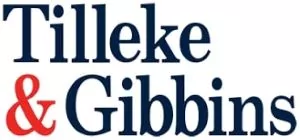"Forced labor" has many incarnations. Some forms are shocking, such as a case in 2021 where Vietnamese guest workers were brought to a Chinese-owned factory in Serbia that manufactured tires sold to European car companies. The guest workers allegedly had their passports taken away and were subjected to horrible living conditions, including a lack of food, forcing them to resort to hunting small animals in the nearby forest to survive. However, forced labor more often takes subtler forms, so that most people do not even recognize it as such. For example, a factory may receive an order with an extremely short production deadline, and the workers are instructed to work overtime hours. If the employees refuse to do so and stop working when their regular shift ends, they receive warning letters the next day. While less shocking than the situation of the guest workers forced to hunt squirrels to survive, it is also forced labor.
ILO Convention No. 29 on Forced Labor defines forced labor as "all work or service...extracted from any person under the menace of any penalty and for which the said person has not offered...[them]self voluntarily." The ILO names 11 indicators of forced labor: abuse of vulnerability, deception; restriction of movement, isolation, physical/sexual violence, intimidation and threats, retention of identity documents, withholding of wages, debt bondage, abusive working or living conditions, and excessive overtime.
Excessive overtime in particular is common in the manufacturing sector in Southeast Asia, and debt bondage is also prevalent. Some companies demand employees provide a "training deposit" when they commence their employment, which they will have repaid provided they continue working for a minimum period. However, these common practices may soon be eradicated due to new supply chain due diligence legislation. Two such examples demonstrating this greater focus on forced labor within supply chains are the Uyghur Forced Labor Prevention Act (UFLPA) in the US and the Forced Labor Regulation in the EU.
The UFLPA
The Xinjiang region of China has been subject to scrutiny due to the government's practice of applying poverty alleviation and employment programs aimed at the Uyghur minority, which many human rights groups claim involve forced labor. In response to this, the US government enacted the UFLPA in 2021, and the law went into effect in June 2022. Under the UFLPA, products with any components or production originating in the Xinjiang region, or sourced from an entity blacklisted under the UFLPA, are subject to a rebuttable presumption that forced labor was used in their supply chain and are banned from import into the US. To rebut this presumption, the importer of the relevant product must provide extensive evidence that no forced labor was present at any stage of its supply chain.
The UFLPA is not a paper tiger, and has been actively enforced by the US Customs and Border Patrol. This active enforcement has significantly impacted Vietnam. Of garment exporters, Vietnam has been the most significantly impacted by the UFLPA to date, surpassing even China. This appears to be because many of Vietnam's garment manufacturing plants are Chinese-owned, and 90% of China's cotton supply is sourced from Xinjiang. Thus, garments manufactured in Vietnam are subject to strict scrutiny from the US Customs and Border Patrol. In general, Vietnam's close trade relationship with China has resulted in many of its products being denied import into the US due to suspicion of these products having links to the Xinjiang region. Vietnam has the highest volume of shipments by value denied entry into the US under the UFLPA.
The implementation of the UFLPA compels manufacturers in Asia wishing to import their products into the US to map their supply chains. There are two different routes an importer may take to ensure its goods are not barred from entry into the US under the UFLPA: (1) for products with no links to the Xinjiang region, provide evidence that the product has no inputs sourced from the Xinjiang region, which requires tracing the entire supply chain with detailed evidence for each tier of the supply chain; or (2) for products that include components sourced from the Xinjiang region, map the entire supply chain and provide information on due diligence, supply chain management measures, and workers and working conditions at each stage of the supply chain, resulting in clear and persuasive evidence that there is no forced labor in the supply chain. Companies engaging in manufacturing garments or other sensitive products, such as solar panels (half of the world's polysilicon, which is used in 95% of all solar panels, is sourced from Xinjiang), may have no choice but to map their entire supply chains to avoid having their products denied entry into the US.
The Forced Labor Regulation
The EU's Forced Labor Regulation may also make supply chain mapping a necessary aspect of manufacturing in Southeast Asia. On April 23, 2024, the European Parliament approved the Forced Labor Regulation, and it now needs to receive final formal approval from the European Council (expected in the third quarter of 2024). It will take effect three years after it passes into law, so it is anticipated to be effective from 2027 onward.
The Forced Labor Regulation similarly casts a wide net and applies to all industry sectors, products, and economic operators. Products with forced labor at any stage in their supply chain will be banned from import into the EU. However, unlike the UFLPA, it does not apply a rebuttable presumption that forced labor was used based on a product's geographic origin. Instead, the competent authority—either the national authority of the EU country where the forced labor allegedly took place, or the European Commission, which will investigate forced labor cases outside of the EU—bears the burden of establishing that forced labor was used in producing the goods.
Over the next 18 months or so, the EU Commission will provide guidelines on assessing the likelihood of a product being made with forced labor and will draw up a database of specific economic sectors in specific geographical areas in which state-imposed forced labor exists. (For example, the renewable energy sector in the Xinjiang region may be considered a high-risk area.) This will then become a criterion to assess the need to open an investigation. At the same time, the European Commission will issue directions to economic operators outlining their due diligence obligations and requiring additional information for high-risk products, such as the products' suppliers and manufacturers.
The effectiveness of the Forced Labor Regulation may largely depend upon the EU Commission's ability to conduct investigations outside of the EU. The EU has created the Union Network against Forced Labor Products to facilitate communication and information-sharing among foreign countries, intended to build cooperation with foreign countries through existing dialogues or implementing trade agreements. However, under the principles of sovereignty, any third-party country would have to consent to the European Commission's investigation—but would likely have strong economic incentives to deny this consent, as welcoming an investigation into forced labor could result in major industries having their exports to the EU denied.
Conclusion
The UFLPA is actively enforced and is changing the way manufacturers do business in Southeast Asia. Now supply chain tracing is essential, and manufacturers are also assessing labor law compliance not only within their own operations but also within those of their suppliers. The EU's new Forced Labor Regulation, though possibly less enforceable than the UFLPA, will also encourage companies to pay greater attention to labor standards within their supply chains. Issues that have long been ignored, such as excessive overtime, will now need to be addressed. Some industries may be reshaped by these new laws; for example, fast fashion may need to slow down if the excessive overtime necessary to meet short production deadlines results in their products being barred from the EU or the US.
Hopefully these new laws will foster conditions in which it is no longer economically profitable to strand guest workers in a foreign country, deprive them of food, and force them to work under atrocious conditions in order to manufacture car tires at a cheaper price. Under these conditions, maintaining good labor standards will no longer be viewed by businesses as a luxury or a useful PR tool; instead, it will become essential to accessing major consumer markets.
The content of this article is intended to provide a general guide to the subject matter. Specialist advice should be sought about your specific circumstances.


